| Designation: | BTR-40 |
 |
|---|---|---|
| Manufacturer: | Arzamas Machinery Plant | |
| Product type: | Armoured Vehicles | |
| Name: | Wheeled armoured personnel carrier |
Development work on a new 4 × 4 armoured personnel carrier (under the designation BTR-141) began in 1944 at the VA Dedkov OKB design bureau under the chief designer VK Rubtsov. This was based on a lengthened GAZ-63 (4 × 4) 2,000 kg light truck chassis with a slightly more powerful petrol engine (increased by 10 hp). The first prototype was completed in 1947 and had angled sides that tended to restrict its carrying capacity. The BTR-141 was then redesigned with vertical sides and rear. Trials with this model were carried out from 1949 and in 1950 it was accepted for service under the designation BTR-40. It entered service in 1950. The vehicle was originally used both as an armoured personnel carrier and as a command and reconnaissance vehicle.
BTR-40 series vehicles produced from 1956 had a central tyre-pressure regulation system and were known as the BTR-40Vs. BTR-40 series vehicles have in the past been called the Sorokovke in Russia.
By today's standard the BTR-40 APC is obsolete because it has limited cross-country mobility and provides a low level of protection against small arms fire, shell splinters and mines.
According to United Nations sources there were no exports of any surplus BTR-40 series vehicles by any country between 1992 and 2004. It is estimated that total production amounted to about 8,500 units. Description
The hull of the BTR-40 is made of all-welded steel with the GAZ-40 6-cylinder water-cooled petrol engine at the front, commander and driver in the centre and the personnel compartment at the rear.
The driver sits on the left of the vehicle with the vehicle commander to his right. The windscreen in front of them can be covered by an armoured shutter hinged at its upper part. The shutter has a vision block for observation when it is lowered. Both the commander and driver have a door in the side of the hull, in the upper part of which is a vision flap that hinges open downwards on the outside and has a vision slit.
The eight infantrymen sit in the back of the vehicle, three on a bench seat at the very rear of the hull and the other five on individual seats. The troops enter and leave the vehicle by twin doors in the rear of the hull. The troop compartment has an open top, which can be covered by a tarpaulin that is normally carried in the vehicle.
There are three pintle mounts for machine guns, one on the rail that runs across the top of the troop compartment immediately behind the commander's and driver's position, and the other two on either side of the troop compartment. The basic vehicle is armed with a single 7.62 mm SGMB machine gun, which is normally mounted on the front pintle. This weapon has an elevation of +23.5°, a depression of -6° and a traverse of 45° left and right of the vehicle's centreline.
Early production vehicles had no firing ports but later production vehicles have two or three in each side of the hull and two at the rear of the hull, one either side of the twin doors.
A spare wheel is carried on the rear of the hull in the centre and a saw is carried on the left side of the hull. Some vehicles have a winch with a capacity of 4,500 kg mounted at the front of the hull. The basic BTR-40 does not have an NBC system, night vision equipment, an amphibious capability or a central tyre-pressure regulation system. Variants
This is armed with twin 14.5 mm KPV heavy machine guns in a turret (ZTPU-2) with a traverse of 360°. The guns have an elevation of +80° and a depression of -5°, both elevation and traverse being manual. The BTR-40A has a crew of five and carries 2,400 rounds of 14.5 mm ammunition. The guns have a maximum horizontal range of 8,000 m and a maximum vertical range of 5,000 m, but effective anti-aircraft range is 1,400 m and effective ground range is 2,000 m. These weapons are also mounted on the BTR-152A (6 × 6) vehicle and towed models of the KPV are called the ZPU-1 (single barrel), ZPU-2 (twin barrel) and the ZPU-4 (quad barrel).
This vehicle was developed at the same time as the BTR-40 armoured personnel carrier. Although normally referred to as an anti-aircraft gun system, it was also employed as a long-range support weapon against ground targets.
This is similar to the basic model but has overhead armour protection and four roof hatches, two per side, that open to the outside of the vehicle, with a circular firing port. This entered service in 1957 and can carry six troops plus its crew of two.
This is fitted with equipment at the rear of the hull which enables the crew to set marking pennants into the ground while the vehicle is crossing contaminated ground.
This rail scout vehicle was introduced in 1969 and is a BTR-40 with a metal wheel system for running on railway lines. It was derived from the earlier BA-64G rail scout vehicle based on the BA-64 (4 × 4) light armoured car.
The Egyptian Walid (4 × 4) APC is very similar to the BTR-40 and was built in Egypt by the Kader Factory for Developed Industries. Full details of this vehicle are given in a separate entry. This vehicle has now been phased out of service with Egypt although it still remains in service with some other countries.
|
||||||||||||||||||||||||||||||||||
|
||||||||||||||||||||||||
Related Articles |
|
Armoured Personnel Carrier (05.02.2007) |
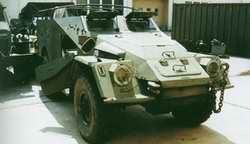 |
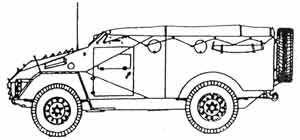 |
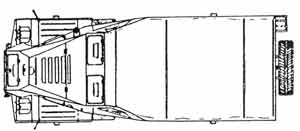 |
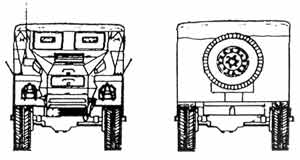 |
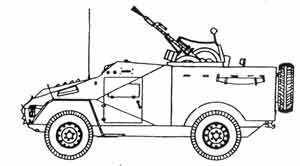 |
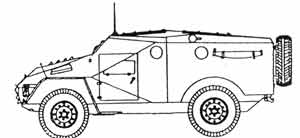 |
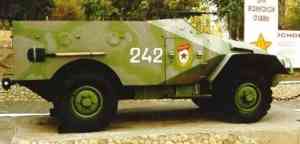 |
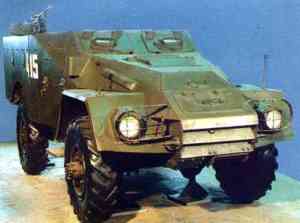 |





